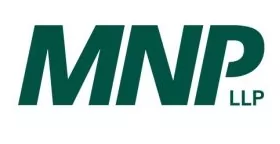Is your company sending people to Canada? If so, you may have a tax exposure you didn't know about. Canada views the mere presence of employees – or even other contractors on its behalf – as "carrying on business in Canada". In most cases, you probably don't have a tax liability. But if you don't register and file the appropriate returns, you could have serious penalties. And depending on what you do, you may have actual tax.
There are three major areas that you need to be concerned about: Goods and Services Tax, corporate income tax, and employee taxation.
By the way, by "company", we mean corporation, partnership, trust, limited liability company, and even a sole proprietorship.
Goods and Services Tax ("GST")
GST is a value-added type of tax. For most registrants, the GST does not create a meaningful tax cost. When your company charges a client GST, it remits payment to the government. When it pays expenses that are subject to GST, it gets an "input tax credit" generally equal to the amount paid (there are exceptions to this rule).
This tax goes by three names, depending on the province(s) in which you operate. Some provinces have integrated their sales tax systems with the federal government's GST. They taxes are administered federally, by the Canada Revenue Agency ("CRA"). In this case, the tax is called a Harmonized Sales Tax, or HST. In Quebec, it is known as the QST, and it is operated separately by the Quebec government (requiring another return).
HST rates vary by province (13-15%)
There are some provinces that do not use the HST. Instead, a GST of 5% applies, along with provincial sales taxes (0-7%) that are similar to those of US states.
Because your company is not Canadian, it may or may not be required to register for GST. However, it is often advantageous to register, so as to gain access to the input tax credit system.
Corporate Income Tax
Withholding
The first thing that happens when your company invoices for services rendered in Canada is income tax withholding at source. Your Canadian clients must withhold and remit 15% of any payment for services rendered in Canada. This withholding is not actual tax - it is a payment on account of tax, which may be refunded.
One major trap here is "cascading" payments. If your ultimate client pays a middleman, which then pays your company, withholding is required at each stage.
It is possible to request permission from the Canada Revenue Agency ("CRA") to reduce or eliminate this withholding, where it is excessive (greater than the anticipated actual tax).
Services rendered outside Canada are not subject to withholding or tax.
Actual tax
If your company has a Permanent Establishment ("PE"), it will be subject to Canadian tax. There are three major ways to have a PE:
- The existence of an office or other physical place of business, and
- The presence of individuals working for your company in Canada for more than 183 days in any 12-month period working on a single project, or a group of connected projects. Any portion of a day counts as a day, and any number of individuals in Canada on one day counts as one day.
- A two part test:
-
- An individual working for your company is present in Canada for more than 183 days in any 12-month period, and
- Canadian revenues exceed 50% of the company's gross business revenue;
If your company has no PE, it will be exempt from tax. Any withholding will be refunded.
Filing returns
A partnership operating in Canada must file a partnership return, and the partners must each file their own returns. A US LLC is treated as a corporation, even if it is treated as a partnership in the United States. There are more complications with an LLC – too many to go into here.
The effective corporate tax rate in Ontario is 26.5%. The rates in other provinces are generally close to this rate. For accumulated profits over C$500K, there is a 5% "branch" tax on remittance of those profits.
One corporate tax return covers federal tax, and that of all provinces except Alberta and Quebec. They have separate returns.
Personal tax rates run from 20-50%, depending on the amount of income and the province in which work is performed.
In Canada, one personal tax return covers federal tax, and that of all provinces except Quebec. Quebec has a separate return.
Employee taxation
Withholding
When a foreign employer sends a foreign-resident individual to work in Canada, it is responsible for withholding tax in pretty much the same manner as a Canadian employer of a Canadian employee.
The biggest difference is that only Canadian wages are subject to withholding. Canadian wages are usually a pro-rated portion of an employee's worldwide wages, based upon the time worked in Canada.
Again, this withholding is not actual tax - it is a payment on account of tax, and may be refunded.
Payroll taxes
Generally, employees who work primarily outside of Canada will continue to be subject to their home-country payroll taxes. For an American employee, these taxes will include Social Security, Medicare, state disability insurance, and the like. Your company will continue to pay regular Unemployment Insurance premiums.
In some cases, employees who become based in Canada will be subject to the Canada Pension Plan instead of Social Security and Medicare, and subject to Canadian Employment Insurance instead of the home-country equivalent.
As the employer, you may be required to pay into provincial Workers' Compensation.
Actual tax
To a US-resident individual, Canadian wages are subject to Canadian tax, unless:
- The Canadian wages are under C$10,000, or
- The employer has no PE in Canada and the employee is physically present 183 days or less in any 12-month period beginning or ending in the calendar year.
Personal tax rates run from 20-50%, depending on the amount of income and the province in which work is performed.
Services rendered outside Canada are not subject to tax.
If the individual becomes a resident of Canada, then his/her worldwide income is subject to Canadian tax.
Tax protection and equalization
When an individual works in Canada, the total tax burden (Canadian, provincial, US and state) tends to be noticeably higher than the burden on an individual who works only in the United States. Consequently, employers often "protect" or "equalize" employees so that they are not out of pocket.
Not only the tax must be reimbursed, but all jurisdictions will then tax that reimbursement, leading to a recursive calculation.
We can help your company design a tax protection policy to keep your employees whole, and to let them know that they will not be disadvantaged by working in Canada.
Voluntary disclosure
It is common for a company to become aware of these requirements only after it has been doing business in Canada for some time. There are, as you might expect, penalties for failure to withhold, remit, and file returns. After a number of years, these penalties, plus interest, can be a significant amount, and are a deterrent to coming clean.
The Canada Revenue Agency has a policy which allows companies and individuals to make a voluntary disclosure of their failure to comply. Generally, all that is required is that the taxpayer contact CRA before CRA contacts the taxpayer. Then the taxpayer simply files the returns that were required, along with a voluntary disclosure request.
The approach will generally avoid penalty, and CRA will often waive interest.
We can prepare the disclosures for you. We have a specialist who will be assigned to your file to ensure you comply in the most advantageous way.
The content of this article is intended to provide a general guide to the subject matter. Specialist advice should be sought about your specific circumstances.

